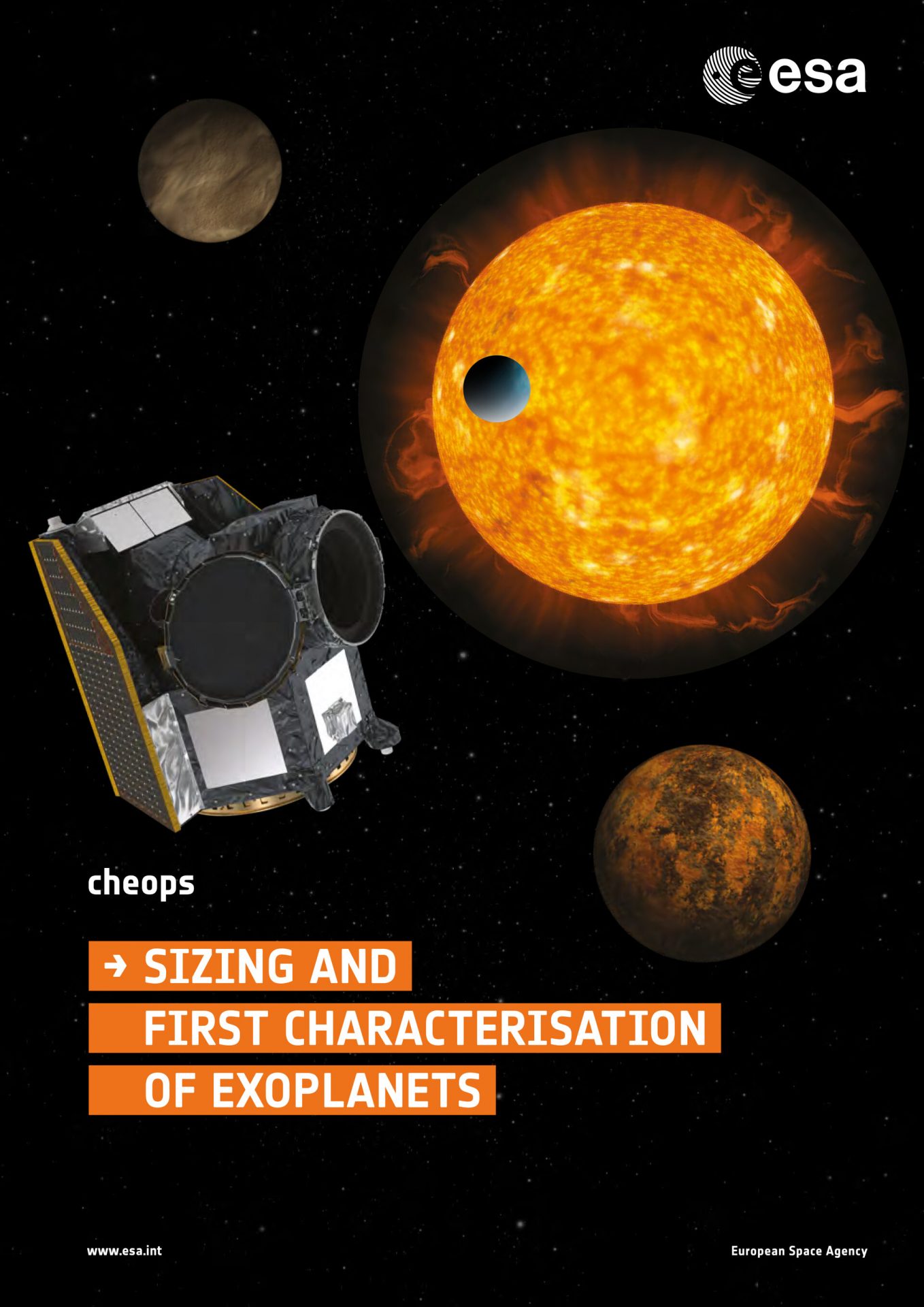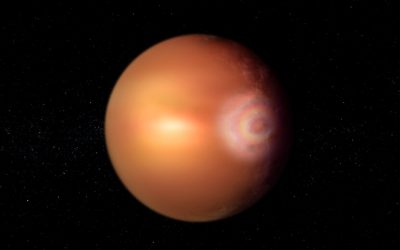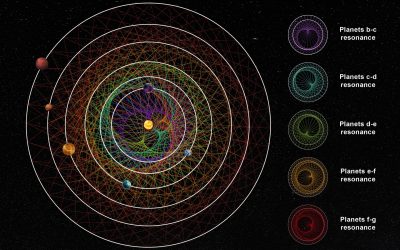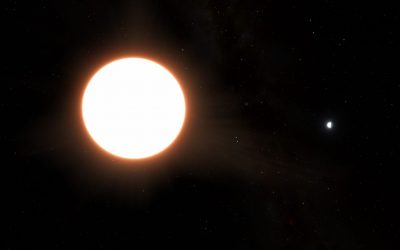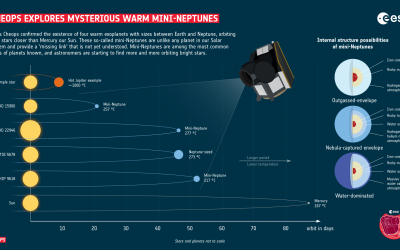CHEOPS
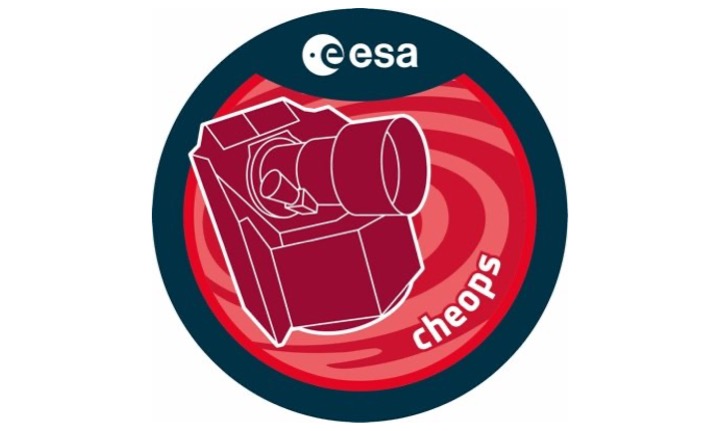
Principal Investigator:
Willy Benz
National responsible:
Isabella Pagano
Local contact person:
Isabella Pagano
CHEOPS (CHaracterizing ExOPlanet Satellite) has been proposed as an S-class mission in response to the call for Proposals issued by ESA in March 2012. It has been selected by ESA as the first S-class mission in Cosmic Vision 2015-2025. The mission has been adopted in 2014, and launched on Dec 18 2019.
CHEOPS is a joint ESA-Switzerland project, with important contribution from Italy and nine other ESA Member States, cooperating within a dedicated Mission Consortium.
It is the first mission dedicated to the characterisation of small-size transiting planets by means of ultrahigh precision photometry on bright stars already known to host planets. It enables an accurate determination of the radii of transiting planets, for which the mass has already been measured from ground-based spectroscopic surveys. It also provides precision radii for new planets discovered by the next generation of ground-based transits surveys (Neptune-size and smaller).
For the first time, CHEOPS enables comparative planetology in an unexplored mass range at a precision never before achieved. CHEOPS contribute also to better select the targets for future ground- (e.g. E-ELT) and space-based (e.g. JWST, Ariel) facilities with spectroscopic capabilities for atmospheric characterisation.
Italy has a role of primary importance in Cheops, both for its contribution to the instrument and for its scientific contribution. The researchers of INAF – Astrophysical Observatory of Catania and Astronomical Observatory of Padua – developed the optical project of the telescope, and supported the industry selected by Italian Space Agency (ASI) – a group of companies formed by Leonardo SrL (lead partner), Thales Italia and MediaLario – for the realization of the mirrors, the back-end optics, and for the integration, alignment and test of the telescope. The flight model was delivered by Italy to the Cheops Consortium – led by the University of Bern – in May of 2017.
The INAF team also contributed in an original way to all the scientific preparation phases of the Cheops telescope: writing the scientific requirements, their transposition into technical requirements and their verification; elaboration of the model and analysis of stray light, the requirements of which are very stringent; study of the optical performance of the instrument and eventually contributed to the implementation and validation of data reduction procedures. Finally, in collaboration with colleagues from the University of Padua, and with the scientific team of the Cheops consortium, the INAF researchers participated in the formulation and preparation of the scientific program on guaranteed time (80% of the observing time).
MISSION SUMMARY
Name: CHEOPS, CHaracterizing ExOPlanet Satellite Primary
Goal: Characterize transiting exoplanets on known bright and nearby host stars
Targets: Known exoplanet host stars with a V-magnitude < = 12 anywhere on the sky
Wavelength: Visible range : 330 to 1100 nm
Telescope: 33 cm reflective on-axis telescope; 19×19 arcmin^2 field of view
Orbit: Sun-synchronous, dusk-dawn orbit at 700 km above Earth
Lifetime: 3.5 years (5 years goal)
Satellite: 1.5 m size; 280 Kg mass
Type: S (small)-class mission
Main other institutes involved besides INAF
Persone OACT coinvolte nel progetto:
Isabella Pagano, Giovanni Bruno, Flavia Calderone, Antonino F. Lanza, Giuseppe Leto, Matteo Munari, Gaetano Scandariato, Daniela Sicilia, Vikash Singh
Related news
First ‘glory’ on hellish distant world?
For the first time, potential signs of the rainbow-like ‘glory effect’ have been detected on a planet outside our Solar System. Glory are colourful concentric rings of light that occur only under peculiar conditions.
Data from ESA’s sensitive Characterising ExOplanet Satellite, Cheops, along with several other ESA and NASA missions, suggest this delicate phenomenon is beaming straight at Earth from the hellish atmosphere of ultra-hot gas giant WASP-76b, 637 light-years away.
Seen often on Earth, the effect has only been found once on another planet, Venus. If confirmed, this first extrasolar glory will reveal more about the nature of this puzzling exoplanet, with exciting lessons for how to better understand strange, distant worlds.
ESA’s Cheops helps unlock rare six-planet system
A rare star system with six exoplanets has been unlocked with the help of ESA’s Cheops mission. The discovery is particularly valuable because the planets’ orbital configuration shows that the system is largely unchanged since its formation more than a billion years ago.
Cheops shows scorching exoplanet acts like a mirror
Data from ESA’s exoplanet mission Cheops has led to the surprising revelation that an ultra-hot exoplanet that orbits its host star in less than a day is covered by reflective clouds of metal, making it the shiniest exoplanet ever found.
Cheops explores mysterious warm mini-Neptunes
ESA’s exoplanet mission Cheops confirmed the existence of four warm exoplanets orbiting four stars in our Milky Way. These exoplanets have sizes between Earth and Neptune and orbit their stars closer than Mercury our Sun. These so-called mini-Neptunes are unlike any...
Contatti
Osservatorio Astrofisico di Catania
Via Santa Sofia 78, 95123 Catania, Italia
(+39) 095.7332111
segreteria.direzione.oact@inaf.it
(PEC): inafoacatania@pcert.postecert.it
Per informazioni sul nostro sito: web.oact@inaf.it
Per informazioni sulla didattica e divulgazione: divulgazione.oact@inaf.it
